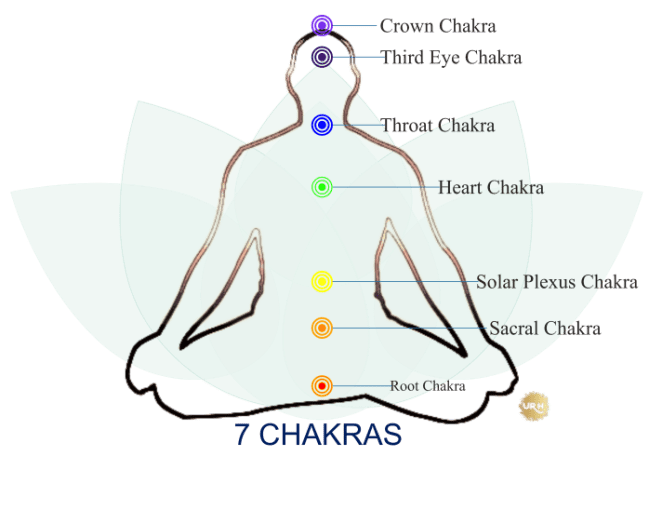Chandra Bhedana Pranayam | Left Nostril Breathing
In an earlier post, I covered what Pranayama is, Chandra Bhedana Pranayama is one of the techniques, where you breathe through the left nostril. We will see the meaning, how to do it and its benefits.
The word Chandra means Moon
The word Bhedan means Pass-through
So, Chandra Bhedana Pranayama also known as left nostril breathing pranayama is a type of Pranayama that uses the breathing technique to purify the Chandra Nadi and create a sense of coolness and rest.
Before we get into more details, let’s understand some of the basic terms so it is easy to understand the complete concept in detail.
In Yogic theory Nadi is an energy channel, our prana energy flows through these channels. We have two nostrils, in Yogic terms each Nadi is referred to with a separate name. When we breathe through Right Nadi and Left Nadi we use two different energy channels.
Right Nadi is called – Surya Nadi (Surya – Sun)
Left Nadi is called – Chandra Nadi (Chandra – Moon)
So, Chandra Nadi is also referred to as Ida Nadi (Lunar channel) and Surya Nadi as Pingala Nadi.
When we breathe in, we take Prana energy in and this energy is also used to purify our Chandra or Ida Nadi and also help us to awaken Kundalini energy.
What is Chandra Bhedana Pranayama?
Chandra Bhedana Pranayama is a simple but effective breathing technique used during the Pranayama. Chandra bhedana pranayama meaning is, we take Prana energy using the left nostril and release it through the right nostril, it creates a coolness effect in our body.
So, it is represented by the symbol of the Moon which represents coolness. This is best way to cool down our body.
While doing Chandra Bhedana Pranayama we continuously follow this breathing pattern and that is why it is called left nostril breathing. When we take the air in using the left nostril, the Prana energy flows in via Ida Nadi, and when we take out the air through the right nostril, the Prana energy flows out via Pingala Nadi.
Ida Nadi and Pingala Nadi are the two major Nadi’s in our body, there is also one more Nadi which is called Sushumna Nadi i.e. central Nadi.
The Prana energy travels using these Nadis from the bottom of our spine to the center of our eyebrows.
How To Do Chandra Bhedana Pranayama
Chandra Bhedana Pranayama Steps
- Find a quiet place where you will not be disturbed during the Pranayama time.
- You can select based on your comfort between Swastikasana or Padmasana to sit as you need to be comfortable during the process.
- Do the pranayam mudra Vishnu Mudra by pressing the index finger and middle finger of your right hand toward the palm, trying to touch the index finger to palm.
- Use the thumb to close the right nostril, while keeping the left nostril open.
- Now slowly start taking the air in with the help of the left nostril and fill the maximum air in your lungs.
- Now you need to hold your breath as per your capacity and concentrate on your breathing.
- Once you feel like you want to breathe out, close your left nostril and remove your thumb from the right nostril, and let the air come out slowly through your right nostril. Your time to take out the air is more than birthing in.
- Now repeat this process of taking air in through Chandra Nadi and taking air out through Surya Nadi.
- In the beginning, you can do the set of 10 rotations.

Doing Chandra Bhedana Pranayama Benefits
- Cool down your body by reducing the body heat
- Brings back the energy and refreshment and takeaway feeling of laziness.
- With daily practice of this Pranayama, your mind will become steady and calm.
- Helpful in reducing stress and feelings of tension.
- Helpful during the low fever to cool down the body
- Help to take down heart-burning feeling
These are some of the core benefits of chandra bhedana pranayama.

Things To Keep In Mind – During Pranayama Chandra Bhedana
- If you are an asthma patient, do not perform Chandra Bhedana Pranayam.
- Avoid doing it during cold/cough and if you have any other problems related to the respiratory system.
- Always learn/take the advice of an experienced person before practicing any process of Yoga and Pranayam.
- Perform any Pranayam with an empty stomach.
- It is recommended to practice deep breathing if you want to learn Pranayam.
Why Chandra Bhedana Pranayama?
Left nostrils and right nostrils function at a time and every person who is practicing Yoga and Pranayam knows this. It is not a simultaneous process. One Nadi is active while the other Nadi is passive at the same time and this cycle continues.
The process of left Nadi becoming active for some time and becoming passive after some time is called the nasal cycle. Now with the help of Chandra Bhedana Pranayama, one can alter this cycle and influence energy flow within Nadi.
During the practice of Chandra Bhedana Pranayama, we take air in through the left nostril and we repeat this process continuously. Now what is happening inside is it is our prana energy is directed toward the right brain. Now prana energy will calm the over-thinking mind and as an effete automatically gives the feeling of coolness.
So, at a time either Ida Nadi or Pingala Nadi will be active depending on how our breathing is happening at that moment (using right nostril or left nostril).
Ida Nadi has moon-like attributes which represent the creative/feminine principle, it is also called Chandra Nadi (Chandra – Moon). When your prana energy is flowing through Ida Nadi it is connected to your right brain.
Pingala Nadi has sun-like attributes which represent the masculine principle, it is also called Surya Nadi (Surya – Sun). When your prana energy is flowing through Pingala Nadi it is connected to your left brain.
Conclusion
We all are continuously breathing and following this cycle of Ida and Pingala naturally. Since you have gone through this information, I suggest keep observing throughout the day how your breathing is happening.
If you are new to Yoga and Pranaya, I suggest keep exploring as you will know more about yourself and the benefits offered are many. Also, now you know the Chandra Bhedana benefits. Let us know your thoughts in the comment session.
Source: Pranayam By Shri P.P.S. Janardanswami








